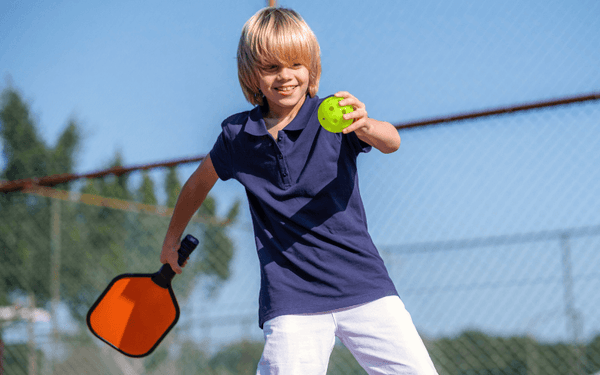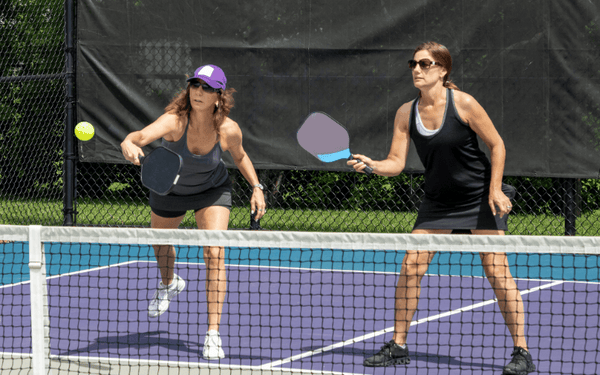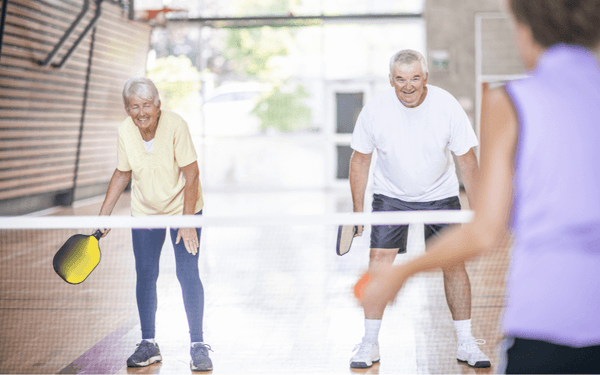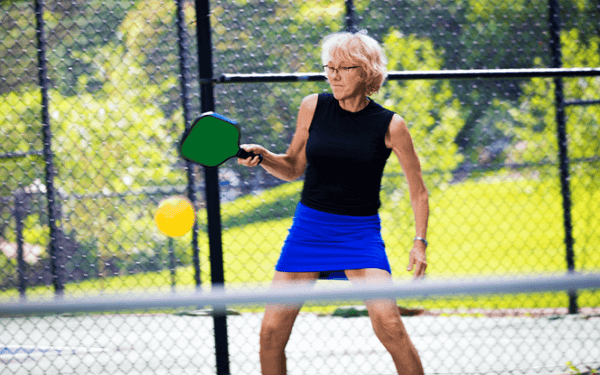No Products in the Cart
The unique charm of pickleball lies not only in the simplicity and excitement of gameplay but also in its remarkable ability to unite people of various ages, from young children to active seniors. This sport offers a rare platform where skill levels and age differences dissolve, allowing for both competitive play and recreational enjoyment in a community setting.
The purpose of this blog is to delve into how pickleball can be tailored to different age groups, ensuring that the game remains enjoyable, competitive, and accessible to everyone, regardless of their age or athletic ability.
Through this exploration, we aim to highlight the adaptability of pickleball, making it a truly inclusive sport that can be enjoyed by all generations.

The skyrocketing popularity of pickleball among diverse age groups can be attributed to several key factors. Firstly, the game's rules are straightforward and easy to learn, making it accessible to beginners and enticing for players looking for a new sport to master. Secondly, pickleball can be played both indoors and outdoors, requiring minimal equipment, which includes a paddle, a plastic ball, and a net, making it an easily adaptable sport for community centers, parks, and backyards.
Beyond the logistical ease, pickleball offers significant social, physical, and mental benefits. For younger players, it fosters hand-eye coordination, agility, and teamwork. Adults find in pickleball a fun way to engage in moderate physical activity, which is crucial for maintaining health without the strain on joints often associated with higher-impact sports. Seniors, in particular, benefit from the game's ability to provide low-impact exercise, promoting cardiovascular health, flexibility, and social interaction, which are essential components of a healthy aging process.
The communal aspect of pickleball cannot be overstated. It brings people together, offering a platform for social interaction, friendly competition, and intergenerational play. This aspect of the game is particularly appealing as it supports a sense of community and belonging among players.
One of the keys to making pickleball accessible and enjoyable for various age groups lies in the customization of equipment and court specifications. For younger players, smaller paddles that are lighter and easier to handle can make a significant difference in their ability to play and enjoy the game. Similarly, using softer and lighter balls can reduce the intimidation factor for kids and beginners, making the game more approachable.
Adjustments to the court can further enhance the accessibility of pickleball for different age groups. For instance, playing on a smaller court size for children or those just learning the game can help players feel more successful and engaged, as they can cover the area more easily and have more frequent rallies. For seniors or players with mobility issues, lowering the net slightly can make the game more enjoyable without drastically altering the fundamental aspects of play.
To keep the game engaging and manageable for younger players, certain rule modifications can be beneficial. Simplifying scoring and serving rules can help children focus more on the fun and less on keeping track of complex game mechanics. For instance, playing games to a lower score or using a more straightforward serve rotation can keep the game moving and exciting.
In educational or youth camp settings, introducing team-based formats or relay-style pickleball games can encourage participation and ensure that the game is inclusive for players of all skill levels. These adaptations not only make the game more accessible but also emphasize teamwork and cooperation, skills that are valuable both on and off the court.

Adults approaching pickleball, whether they are complete beginners or seasoned athletes from other sports, can benefit from focusing on strategic play over pure athleticism. This approach allows players to enjoy competitive games without the need for extreme physical exertion, making the sport appealing to a wider range of adults, including those who may be looking for a less physically demanding sport due to injuries or personal preference.
Developing skills such as accurate serving, strategic shot placement, and effective court positioning can make the game more enjoyable and competitive. For adults in the middle-age demographic, pickleball offers a perfect blend of strategy, skill development, and physical activity, all within a social and welcoming community.

For senior players, pickleball stands out as an ideal sport due to its low-impact nature and the social connections it fosters. Making the game senior-friendly can involve several adaptations, such as using softer balls to minimize the risk of injury, adjusting the length of games to accommodate endurance levels, and emphasizing the importance of warm-up exercises to prevent strains and injuries.
Seniors can enjoy the benefits of regular physical activity, improved mobility, and the joy of learning a new skill, all while engaging in a sport that is as much about community and camaraderie as it is about competition. Instructors and program coordinators can play a vital role in ensuring that pickleball sessions for seniors are tailored to meet these needs, focusing on fun, safety, and social interaction.

Organizing Age-Friendly Competitions
Creating tournaments and leagues that cater to different age groups or that incorporate mixed-age play can significantly enhance the inclusivity and appeal of pickleball. Age-friendly competitions ensure that players can compete against others of similar skill and physical ability levels, making the games more enjoyable and fair. For younger players, participating in tournaments can be an exciting way to test their skills, learn sportsmanship, and enjoy the game in a structured environment.
Mixed-age play offers unique benefits, such as mentoring opportunities where more experienced players can share their knowledge and strategies with younger or less experienced ones. This not only helps improve the skill level across the board but also strengthens the community bonds within the pickleball community. Organizers can facilitate these interactions by creating events that encourage mixed-age teams or by setting up mentoring programs within clubs and leagues.
Instructors and coaches play a pivotal role in adapting pickleball for different age groups. For young players, incorporating fun, game-based learning can help keep them engaged and interested in developing their skills. Using drills that mimic game situations, while simplifying rules and scoring, can make learning more intuitive and enjoyable.
When working with adults and seniors, patience and encouragement are key. Adults may be more self-conscious about learning a new sport, especially in a group setting, so creating a supportive and non-judgmental environment is crucial. For seniors, focusing on the social aspect of the game, along with gradual skill progression and safety, can help maintain their interest and commitment to the sport.
Instructors should also be adaptable, ready to modify lessons based on the abilities and interests of their students. This might mean adjusting the pace of lessons, incorporating more or less competitive play based on group dynamics, or even changing the focus from skill development to social play for groups that are more interested in pickleball as a social outlet.
Community centers, schools, and local sports clubs have a fantastic opportunity to promote inclusivity through pickleball. By offering programs tailored to different age groups and skill levels, these organizations can attract a diverse group of participants. Outreach efforts can include hosting open houses, offering free clinics, or partnering with local schools to introduce the sport to younger generations.
Highlighting the success stories or case studies of programs that have effectively engaged various age demographics can serve as a powerful tool for inspiring others to adopt similar approaches. Social media, newsletters, and local community events can be effective channels for sharing these stories and for promoting upcoming programs and events.

Pickleball's adaptability is a testament to its growing popularity and its potential to serve as a unifying sport for players of all ages. By making thoughtful adjustments to equipment, rules, and playing formats, we can ensure that pickleball remains accessible, enjoyable, and competitive for everyone. The emphasis on inclusivity, combined with the physical and social benefits of the game, makes pickleball a valuable addition to any community or sports program.
As we continue to explore and implement ways to adapt pickleball for different age groups, we not only enhance the playing experience for current enthusiasts but also pave the way for future generations to enjoy this dynamic and inclusive sport.
We invite our readers to share their experiences, tips, or stories about adapting pickleball for different age groups. Whether you're a player, coach, or community organizer, your insights can help others discover the joy and benefits of pickleball. Follow our blog and social media channels for more tips, stories, and updates on the world of pickleball.
Together, let's keep the spirit of the game alive and thriving for players of all ages.
Visit Born to Rally and become the part of pickleball community!